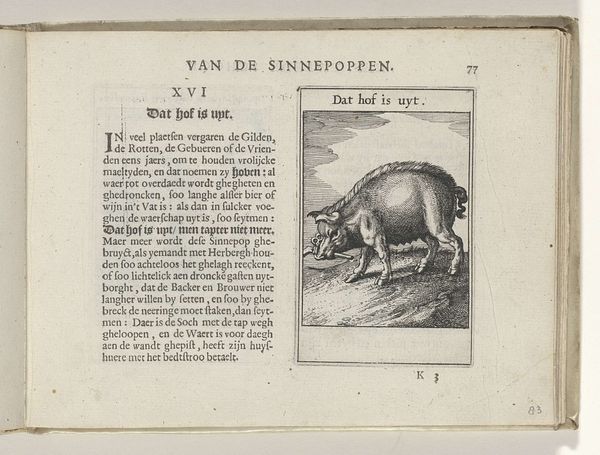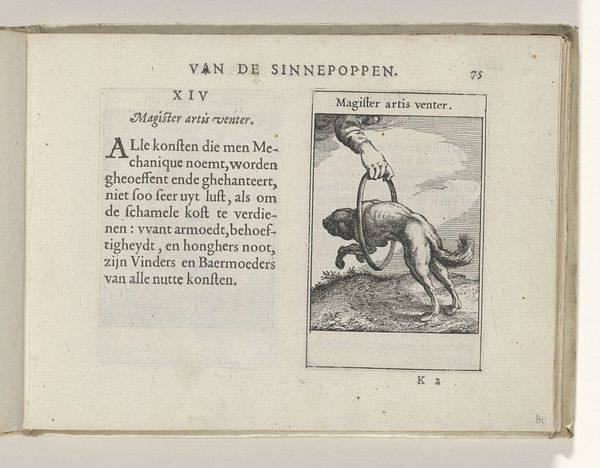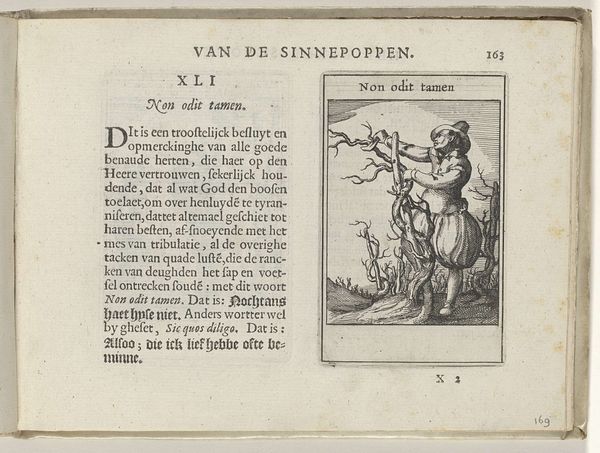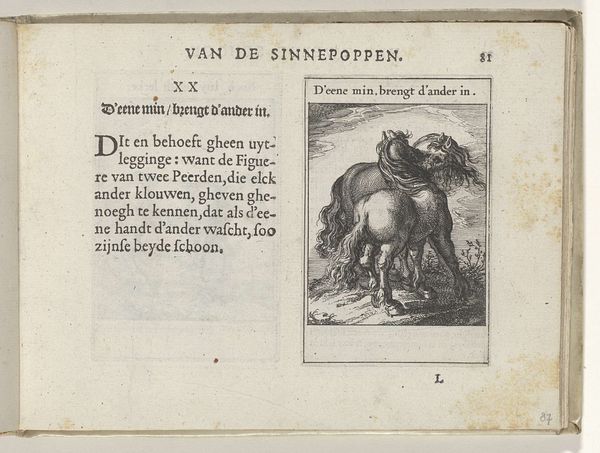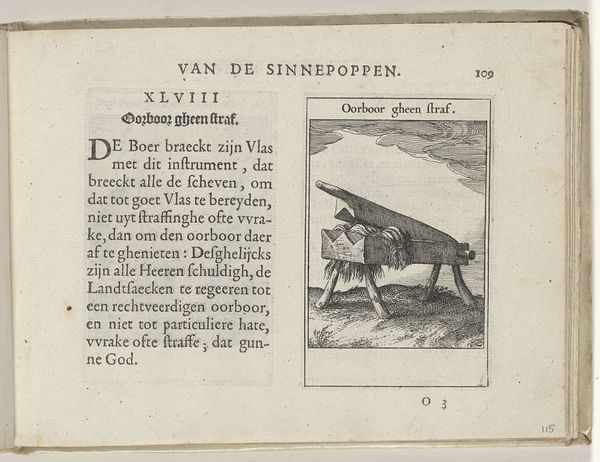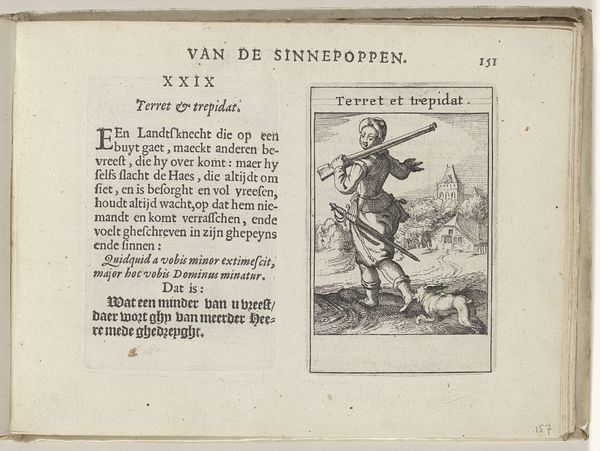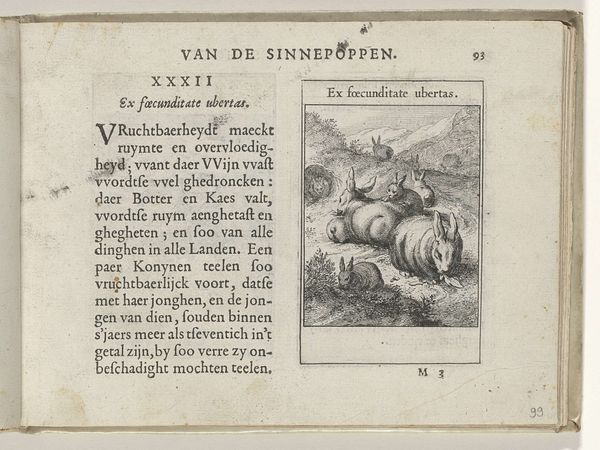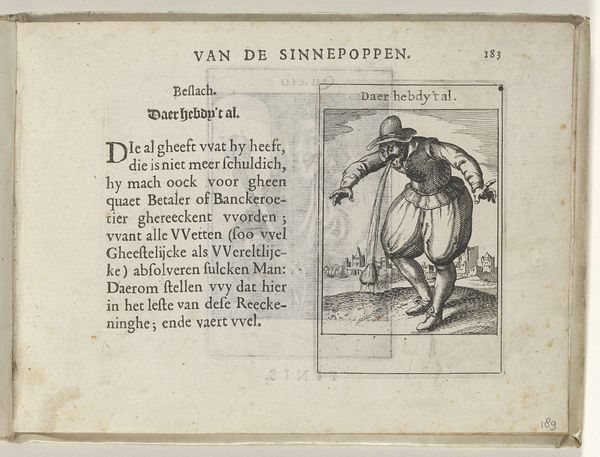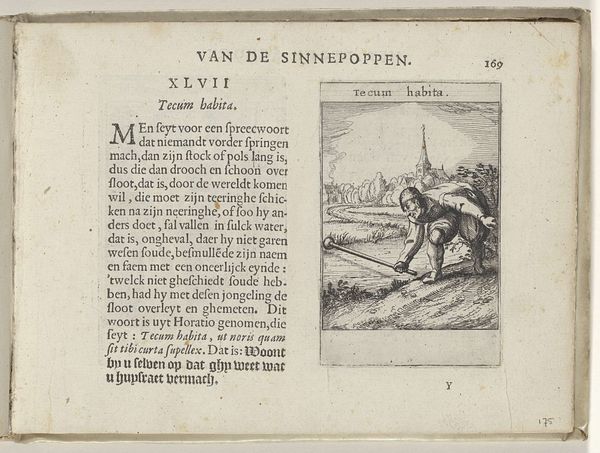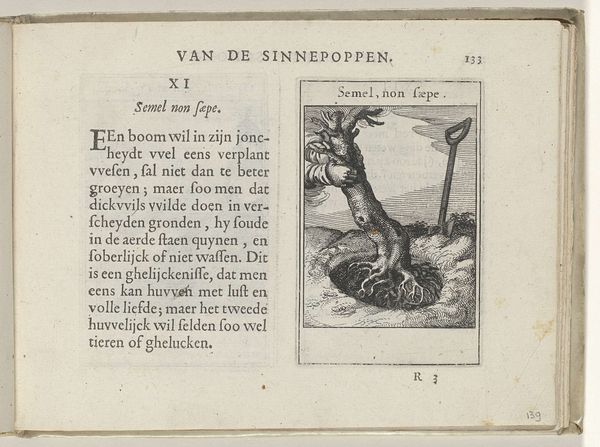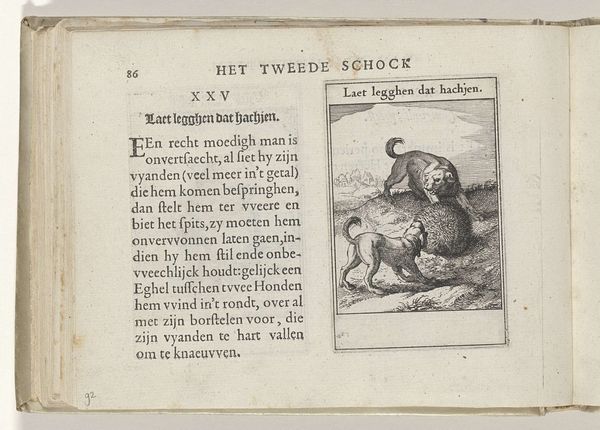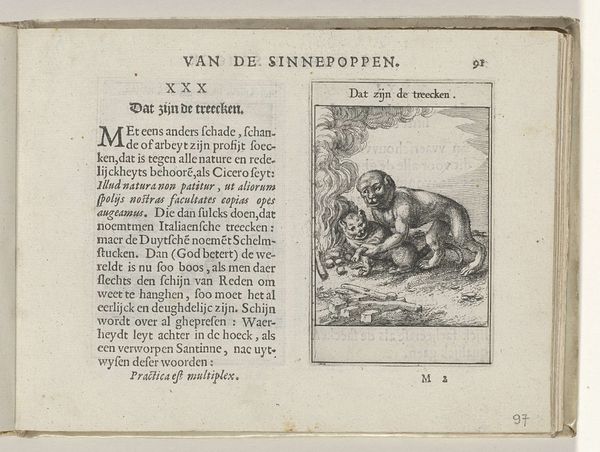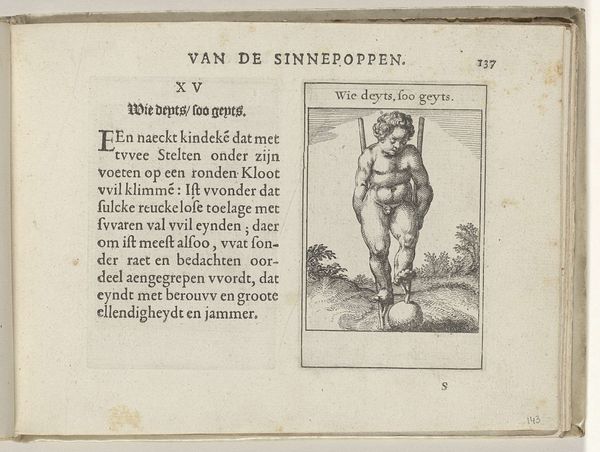
print, engraving
#
narrative-art
#
animal
#
dutch-golden-age
#
ink paper printed
# print
#
landscape
#
figuration
#
engraving
Dimensions: height 137 mm, width 188 mm, height 95 mm, width 60 mm
Copyright: Rijks Museum: Open Domain
Editor: This is “XXVIII Schadelijck, nimmer schoon” from 1614, a print by Roemer Visscher currently housed in the Rijksmuseum. It's a depiction of a stag looking at its reflection in water, and it feels… almost melancholic. The starkness of the engraving contributes to that feeling, I think. What strikes you when you look at it? Curator: As a historian, I immediately consider the cultural context of such an image. Visscher was working in a time of immense social and political change in the Netherlands, so how did printed imagery such as this interact with a public audience? This piece is also very interesting to me because of how it intersects the narrative of a vanity piece with printed media. Considering print's relationship to the public as a mass medium, in your view, would a viewer in 1614 find this piece and its vanity implications critical, accessible, or both? Editor: I think the moral message would definitely be accessible. Vanity, as a vice, wasn't exactly a new concept! But, whether the public truly *internalized* that message is debatable, right? It’s easy to see the stag’s flaw without examining our own reflections, so to speak. Curator: Exactly. And that tension between accessibility and critical self-reflection is, to me, where the enduring power of this piece lies. It provides a point of contemplation for individuals navigating a society increasingly shaped by visual culture. Were people able to afford to purchase this, do you imagine? Editor: Based on what I remember from material culture classes, prints were relatively affordable, weren't they? Which means it had a potentially wide reach! I hadn’t really considered that dynamic before; I was too focused on the artistic components. Thanks! Curator: And I suppose I should look at art for art's sake more often! Always a balance, isn't it?
Comments
No comments
Be the first to comment and join the conversation on the ultimate creative platform.
